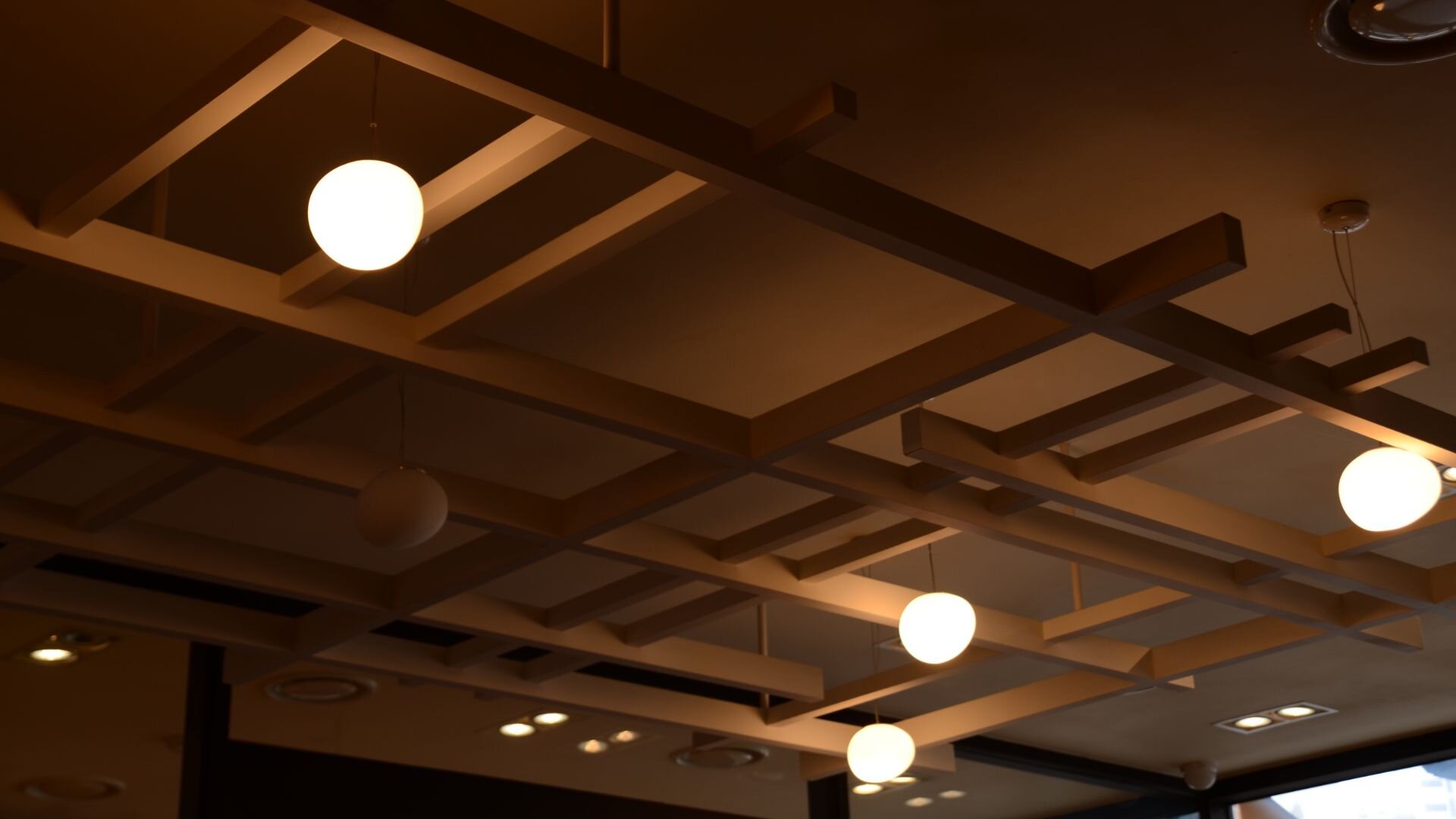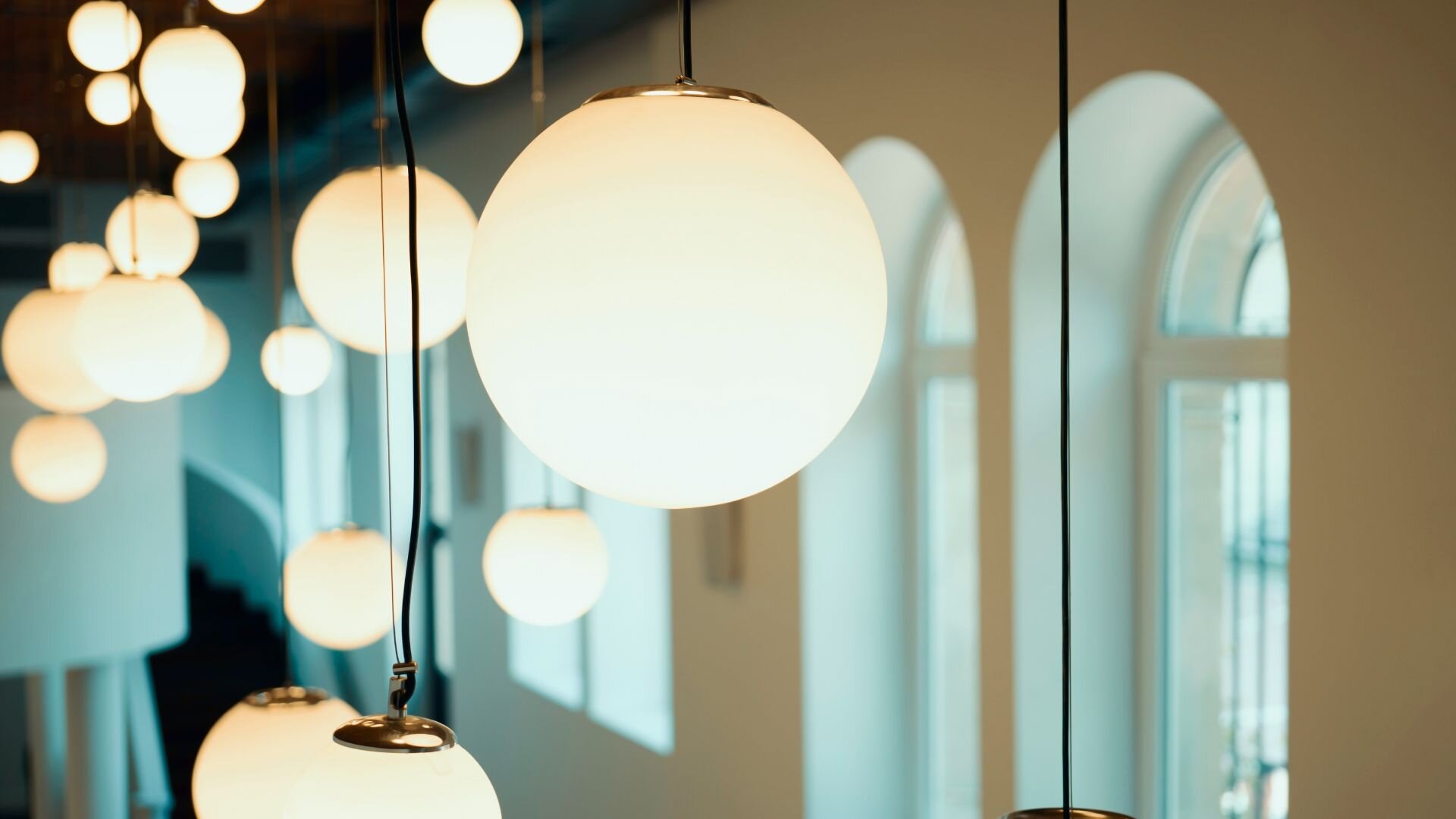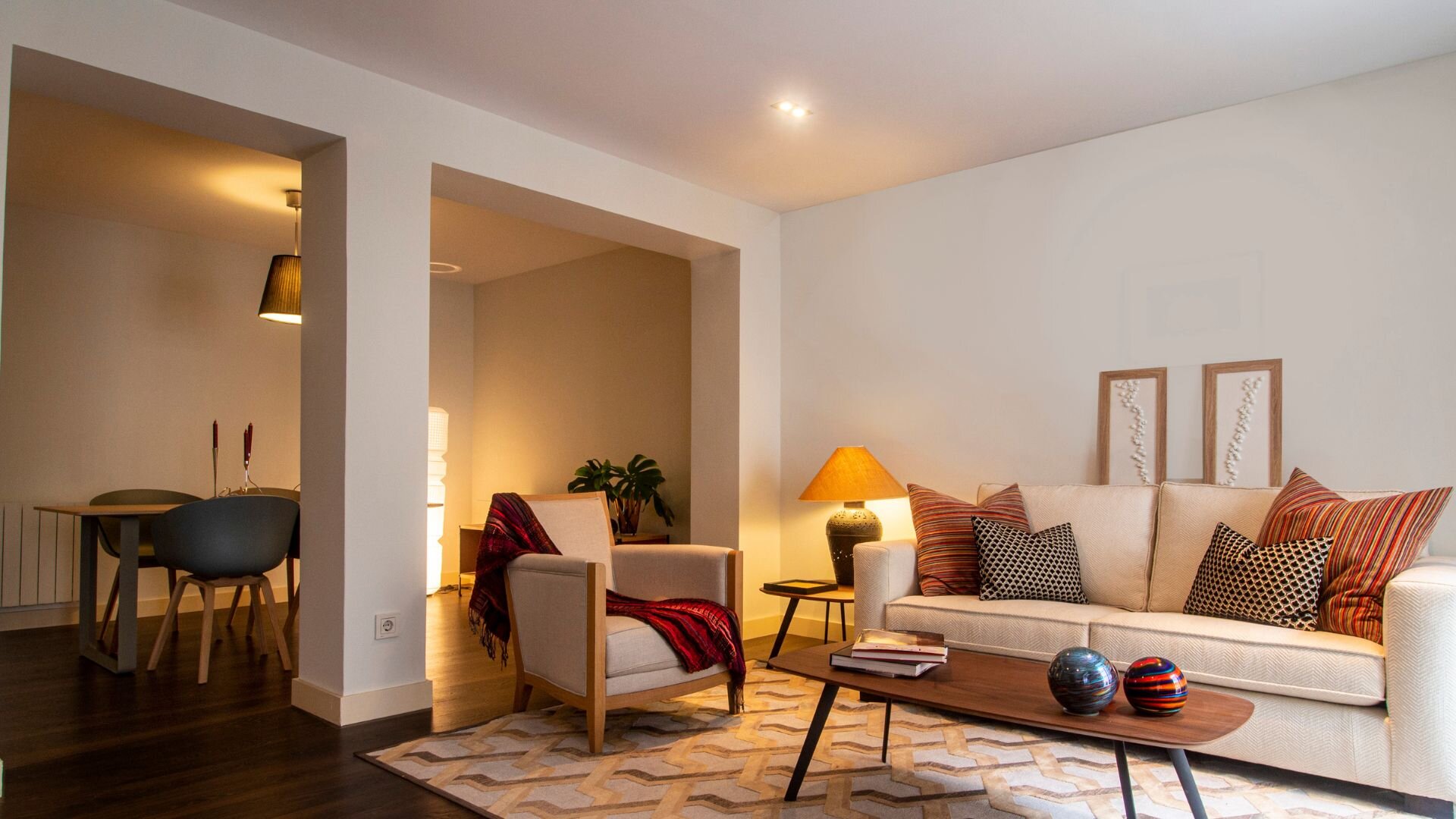Ever wondered how many light bulbs are in the typical Aussie home? On average, there are about 37 light bulbs! Efficient, well-thought-out lighting cuts down on energy use and brings comfort, functionality, and style to your living space.
At Enersol, our Residential Electrician Gold Coast - Strategic lighting decisions can transform how you experience your living spaces, from creating a cosy ambience in the lounge to ensuring proper illumination in task-oriented areas like the kitchen or study. It’s not just about light; it’s about creating harmony between functionality and aesthetic appeal.
Designing a lighting plan during the construction phase is key. Learn more about residential wiring guide. This allows for seamless integration with architectural elements and ensures every corner of the house is lit correctly according to its purpose. A well-thought-out plan avoids costly changes later and ensures your home feels cohesive from day one.
This guide introduces the essential elements of residential lighting design for Australian homes. Thoughtful choices now can lead to a brighter, more comfortable future.
The Basics of Lighting Design: Creating Well-Designed Spaces
Lighting plays a vital role in shaping our daily lives, from enhancing functionality to improving energy efficiency. A well-thought-out lighting plan can transform interior spaces, balancing practicality with aesthetics.

Purpose of Lighting in Different Spaces
Every room in your home requires different lighting. A good plan blends practicality with style. Kitchens and workspaces need bright lighting for precise tasks. In living areas, warm ambient lights create a welcoming atmosphere. Adding indirect lighting adds depth, and using decorations like pendant lights over the dining table brings extra warmth and flair.
Layered lighting is key to balancing multiple lights in a room. It combines natural light, artificial lighting, and energy-efficient lighting options to suit various purposes. Wall lights and floor lamps can enhance specific areas, while recessed lighting and cabinet lighting offer sleek and functional lighting solutions.
Types of Lighting
- Ambient Lighting: The primary light source for interior spaces, ensuring even light distribution.
- Task Lighting: Focused lighting, such as table lamps or lighting fixtures for reading or cooking.
- Accent Lighting: Highlights architectural features, art, or décor with wall-mounted fixtures or motion sensors.
A lighting designer can create tailored lighting scenes to elevate a home’s overall design, ensuring light intensity and colour rendering index are considered.
Energy-Efficient Lighting Options
Energy-efficient lighting is at the forefront of modern lighting design. LED lighting and LED globes are long-lasting, environmentally friendly options with significant energy savings. When choosing light bulbs, consider light bulb types, colour temperature, and beam angle to create the perfect lighting scheme for your needs.
Intelligent lighting systems enhance energy efficiency by allowing precise lighting control. Homeowners can program smart lighting to adjust brightness or switch to motion sensors for outdoor lighting. Whether installing pendant lights, white light, or dimmable LED bulbs, a focus on energy efficiency is crucial.
Incorporating energy-efficient lighting fixtures and well-designed lighting technology ensures a sustainable approach to home lighting. From general lighting to decorative lighting, the right light fittings, permanent fixtures, and lighting control make every room more functional and inviting.
Developing your own lighting plan early in the interior design process ensures that lighting not only complements but enhances your living spaces.
The Role of Smart Technology in Lighting Plans
Smart lighting systems are revolutionising the way we approach home lighting, providing enhanced convenience, energy efficiency, and control.
Features of Smart Lighting
Smart lighting integrates seamlessly with modern lighting plans, offering advanced features like remote control and scheduling through apps or voice assistants. These systems allow for customised lighting scenes, whether you need task lighting in the kitchen, ambient lighting in the living room, or accent lighting to highlight décor.
Colour-changing options enhance the flexibility of lighting design, letting you adjust colour temperature and brightness to suit various moods or occasions. From bright light for workspaces to warm tones for the dining table, smart lighting adapts effortlessly to different settings.
Benefits for Modern Homes
Smart lighting systems contribute to energy efficiency by incorporating sensors and timers, reducing unnecessary power consumption. LED lighting, combined with innovative technology, ensures energy savings while maintaining high-quality illumination.
Homeowners can tailor lighting scenes to fit their needs, whether for everyday lighting or special occasions. Smart lighting enriches the overall design and functionality by allowing homeowners to control various light sources like floor lamps, table lamps, and wall lights.
Compatibility with Australian Standards
All lighting fixtures and smart devices in a lighting plan must meet Australian Standards to ensure safety and reliability. Choosing certified light bulbs and fittings is essential, particularly when working with advanced systems like LED bulbs and smart lighting.
Professional installation is highly recommended to ensure seamless integration of smart lighting with existing systems. Licensed electricians can optimise light sources, light fittings, and control systems to deliver a flawless lighting experience.
By incorporating smart lighting early in the design process, homeowners can create a versatile and energy-efficient lighting scheme that enhances functionality and aesthetics. From natural light to artificial lighting, a well-executed lighting design supports modern living while maintaining compliance with local requirements.
Common Lighting Mistakes and How to Avoid Them
Crafting a thoughtful lighting plan is key to making any space both functional and inviting. Watch out for these frequent lighting blunders to nail a balanced, efficient design.
Overlooking Natural Light
Natural light is a vital component of any lighting plan. Neglecting windows, skylights, or open spaces can lead to an over-reliance on artificial lighting. Incorporating natural light into your design reduces the need for constant use of lighting fixtures, enhancing energy efficiency. Combining ambient lighting with natural light ensures a harmonious and bright living room or workspace.
Using Harsh or Inconsistent Lighting
Inconsistent lighting or harsh light bulbs can disrupt the ambience and functionality of a room. Selecting the right colour temperature for each space is crucial. For instance, warm tones are ideal for living rooms, while cooler tones suit task lighting in kitchens or workspaces. Prioritising light bulbs with a high colour rendering index ensures accurate colour representation, enhancing the overall aesthetic.
Improper Placement of Fixtures
Poorly positioned lighting fixtures can create shadows or leave certain areas underlit. In a living room, strategically placing accent lighting and ambient lighting prevents uneven coverage. Proper placement ensures focused and functional lighting without creating glare for task lighting, such as in kitchens or reading nooks. Planning your lighting design early helps address fixture placement and avoid common errors.
Neglecting Energy Efficiency
Overlooking energy efficiency leads to higher costs and unnecessary waste. Choosing LED lighting and energy-efficient fixtures ensures longevity and reduces energy consumption. Modern LED light bulbs are designed to provide functional lighting while using minimal energy. Incorporating these options into your basic lighting plan not only improves efficiency, but it also makes living more attainable.
Addressing these mistakes and incorporating a well-thought-out lighting plan can enhance the comfort and functionality of your home.
Practical Tips for Creating an Efficient Lighting Plan
Want to make your home comfortable, stylish, and functional? A smart lighting plan is the way to go. Check out these handy tips to ensure your lighting design meets your needs.

Start with a Blueprint
Begin your lighting plan early by mapping out your home’s layout. Identify areas where lighting is essential, such as the living room, kitchen, or workspaces, and consider how natural light interacts with each space. Highlight areas that need additional support from artificial lighting to ensure consistent coverage throughout your home.
Consider Functionality First
Tailoring lighting to specific activities is critical for effective design. Task lighting is indispensable in areas like the kitchen for food preparation or in a home office for focused work. For the living room, functional lighting can include ambient lighting for relaxation or accent lighting to highlight artwork or architectural features. Ensure all lighting fixtures are chosen with both functionality and purpose in mind.
Layer Lighting for Depth and Ambience
Layered lighting adds depth and versatility to any space. Combine ambient lighting, such as ceiling fixtures, task and accent lighting to create a dynamic and balanced atmosphere. In the living room, for example, ambient lighting provides general illumination, while accent lighting highlights focal points, and task lighting ensures practicality for specific tasks like reading.
Choose Fixtures that Complement the Décor
Select lighting fixtures that align with your home’s interior style. In modern spaces, sleek LED lighting options can enhance the décor while improving energy efficiency. Light bulbs with a suitable colour rendering index help showcase the true colours of your furniture and finishes. When choosing fixtures, consider both aesthetics and practicality, ensuring the designs contribute to the overall lighting design.
Work with Professionals
Collaborating with experienced electricians or lighting designers ensures a seamless and efficient lighting plan. Professionals can help optimise the placement of lighting fixtures, select appropriate light bulbs, and ensure compliance with safety standards. Consulting experts early in the process guarantees a balanced combination of ambient lighting, task lighting, and accent lighting tailored to your home’s needs.
A thoughtful and efficient lighting plan enhances functionality and aesthetics, creating a space that is both beautiful and practical.
Australian Lighting Trends for New Homes
Lighting trends in Australia are evolving to combine style, functionality, and sustainability. Here are the key directions shaping modern lighting design for new homes.
Sustainability and Energy Efficiency
Sustainability is at the forefront of Australian lighting design. Eco-friendly materials and energy-efficient lighting fixtures, such as LED lighting, are widely preferred for their longevity and reduced energy consumption. Incorporating LED light bulbs into your lighting plan not only provides functional lighting but also supports environmental goals.
A focus on natural light is another hallmark of sustainable design. Maximising natural light through large windows and skylights reduces the need for artificial lighting while complementing it with ambient lighting to ensure consistent illumination when needed. Choosing light bulbs with a high colour rendering index ensures natural tones are maintained in interior spaces.
Minimalist and Modern Designs
Minimalist lighting focuses on clean lines and simplicity. Recessed lights and other hidden fixtures offer a seamless, tidy appearance. Neutral colours and subtle finishes go hand in hand with modern interiors, ensuring your lighting flows with the overall style.
Ambient lighting paired with task lighting enhances functionality in spaces like the living room or kitchen. For a cohesive look, it’s essential to start the lighting plan early, integrating these minimalist fixtures with the home’s architecture.
Statement Lighting
Bold and sculptural lighting fixtures are making a statement in Australian homes. Chandeliers and large pendant lights serve as striking focal points in dining rooms or entryways. These statement pieces combine ambient lighting with accent lighting, highlighting specific areas while adding personality to the space.
Layering bold fixtures with basic lighting, such as table lamps or wall sconces, creates a balanced lighting plan. Statement lighting adds drama and elevates the overall atmosphere with Smart Home Systems.
Smart lighting is becoming increasingly popular in Australian households. These systems allow homeowners to control lighting fixtures remotely, adjust brightness, and even change colour temperature with ease. Smart systems also offer the ability to create customised lighting scenes, integrating task lighting, accent lighting, and ambient lighting for different moods and activities.
Starting your lighting plan early with smart lighting in mind ensures seamless integration with other smart home technologies. LED lighting is a natural choice for these systems, combining energy efficiency with advanced control options.
Australian lighting trends focus on creating spaces that are stylish, functional, and sustainable. From energy-efficient light bulbs to bold statement pieces, today’s designs reflect the changing needs of modern homes.
Sustainability in Lighting Design for New Homes
Sustainability is an integral aspect of modern Australian lighting design. A well-thought-out lighting plan not only reduces energy waste but also aligns with the values of eco-conscious living.

Energy-Efficient Lighting Fixtures
Eco-friendly lighting fixtures play a critical role in reducing energy consumption. LED lighting is an excellent choice, using up to 75% less energy than traditional incandescent bulbs while lasting significantly longer. Incorporating LED light bulbs into a lighting plan ensures efficiency without compromising functionality or aesthetics.
Solar-Powered Lighting for Outdoor Spaces
Solar-powered lighting is a sustainable solution for outdoor areas such as gardens, pathways, and patios. These fixtures harness Australia’s abundant sunlight, making them cost-effective and environmentally friendly. By relying on solar energy, homeowners can reduce their reliance on grid electricity while maintaining bright, functional lighting outdoors.
Lighting Control Systems
Advanced lighting control systems, including motion sensors and daylight sensors, optimise energy use. Motion sensors activate lights only when needed, preventing unnecessary energy consumption. Daylight sensors adjust indoor lighting based on natural light levels, ensuring an efficient blend of natural light and artificial lighting throughout the day.
Sustainable Materials in Fixtures
Choosing light fixtures made from recyclable or renewable materials, such as bamboo, glass, or aluminium, supports sustainable living. These materials not only minimise environmental impact but also add unique character to a home’s lighting design. Sustainable fixtures combine style with responsibility, making them a natural choice for modern interiors.
Designing for Longevity
A durable and well-designed lighting plan reduces the need for frequent replacements, saving resources over time. Durable lighting fixtures and LED light bulbs are especially important for outdoor areas where weather conditions can be harsh. A lighting plan early in the design process ensures longevity and aligns with sustainable principles.
Green Certifications and Standards
When selecting lighting fixtures and bulbs, look for green certifications like Energy Star or Green Building Council Australia accreditation. These certifications guarantee that the products meet stringent energy efficiency and environmental standards, ensuring a sustainable choice for new homes.
Aesthetic Appeal Meets Sustainability
Sustainable lighting doesn’t mean sacrificing style. Modern designs seamlessly incorporate eco-friendly technology and materials. Sleek LED lighting fixtures, for example, deliver both aesthetic appeal and energy efficiency, making them a perfect addition to any home.
The Bigger Picture: Reducing Carbon Footprint
Sustainable lighting is a vital step toward reducing a household’s overall carbon footprint. By choosing energy-efficient lighting fixtures, incorporating smart control systems, and prioritising renewable energy sources, homeowners can make meaningful contributions to environmental sustainability. Lighting is just one part of a broader effort, which includes adopting smart appliances and efficient water heating systems.
Sustainability in lighting design enhances functionality and style while supporting eco-conscious living. With practical choices, Australian households can create lighting plans that reflect their commitment to the environment and modern design principles.
Brighten Your Home with Enersol Electrical
Transform your home with a well-designed lighting plan that combines aesthetics, functionality, and energy efficiency. Enersol Electrical specialises in general lighting services, offering expert guidance to ensure every space in your home is illuminated to perfection. Whether it’s task lighting for a kitchen, accent lighting for your living room or energy-efficient solutions for outdoor areas, their team provides tailored solutions to meet your needs.
With years of experience and a commitment to excellence, Enersol Electrical can help you create a lighting plan that enhances your home’s style while addressing its functional requirements. From selecting the right lighting fixtures to integrating modern LED lighting and smart systems, their professionals ensure a seamless experience from start to finish.
Ready to bring your vision to light? Contact Enersol Electrical today to discuss your project. Visit www.enersolelectrical.com.au or call 1300 169 023 to explore how their expertise can brighten your home beautifully and efficiently.